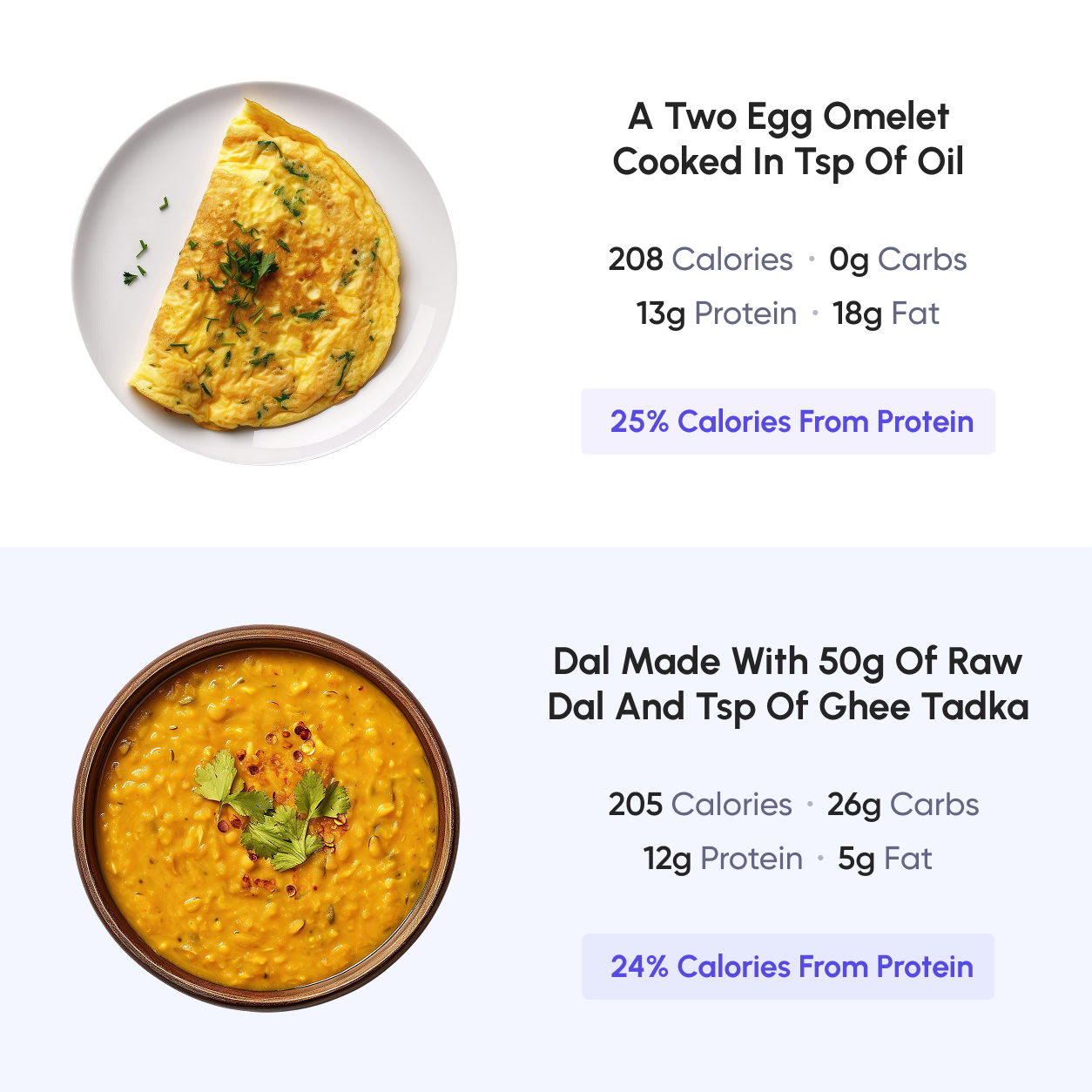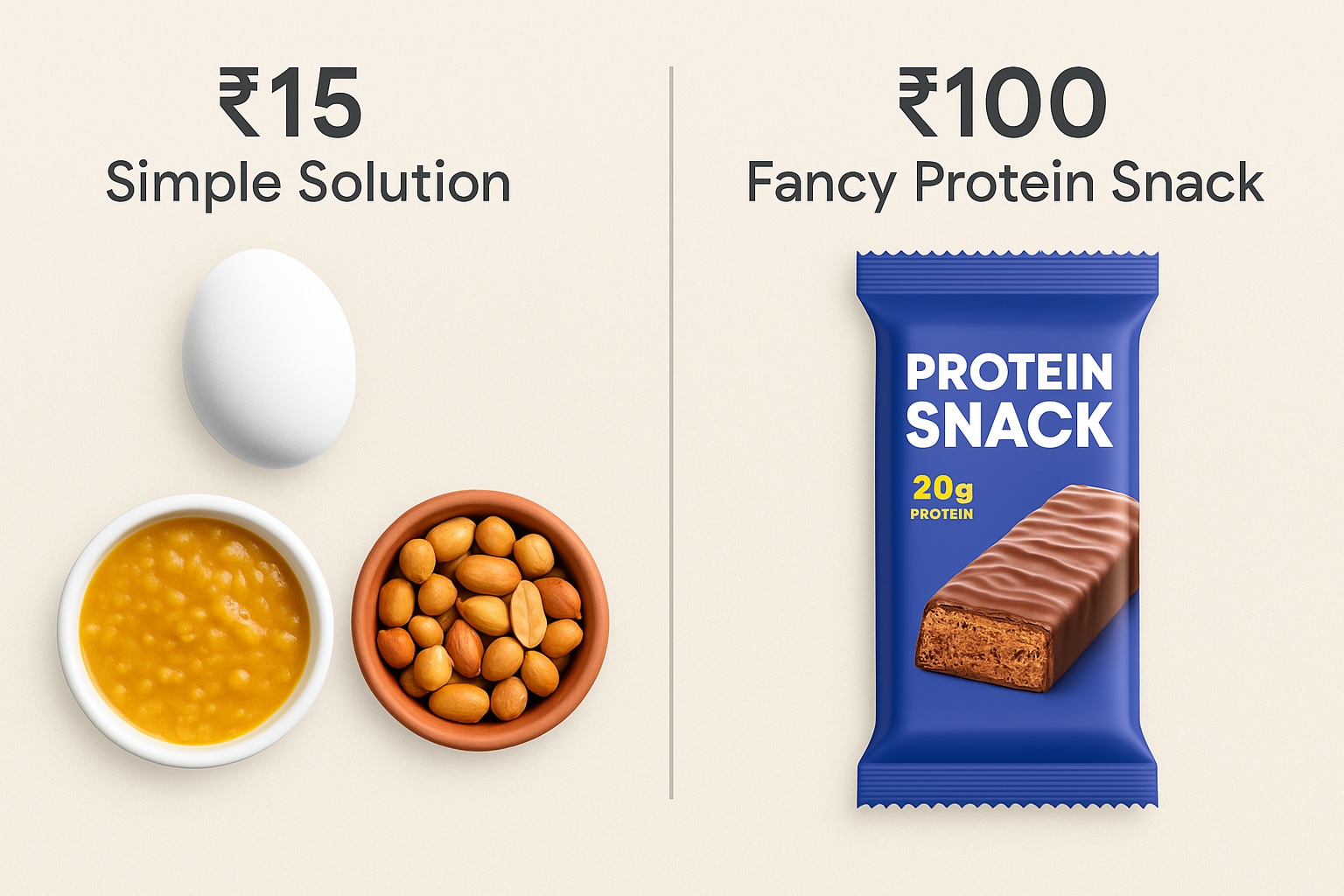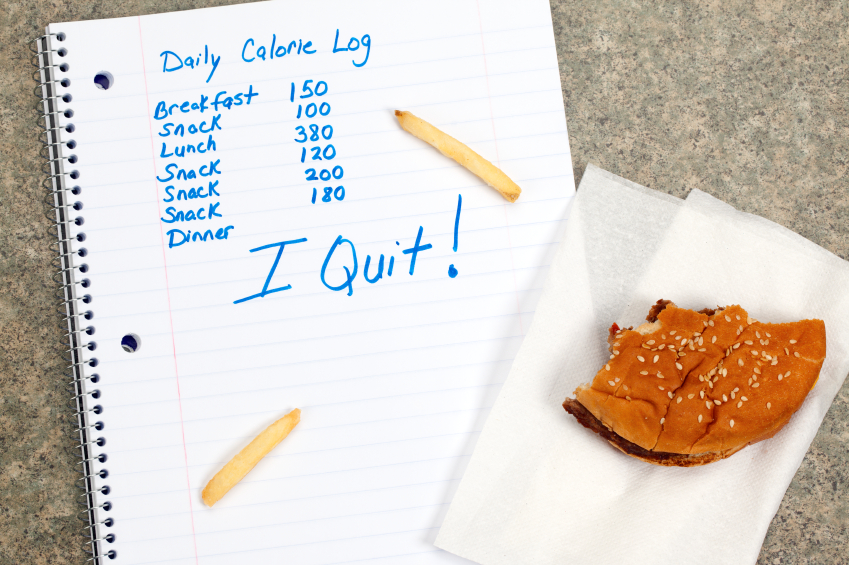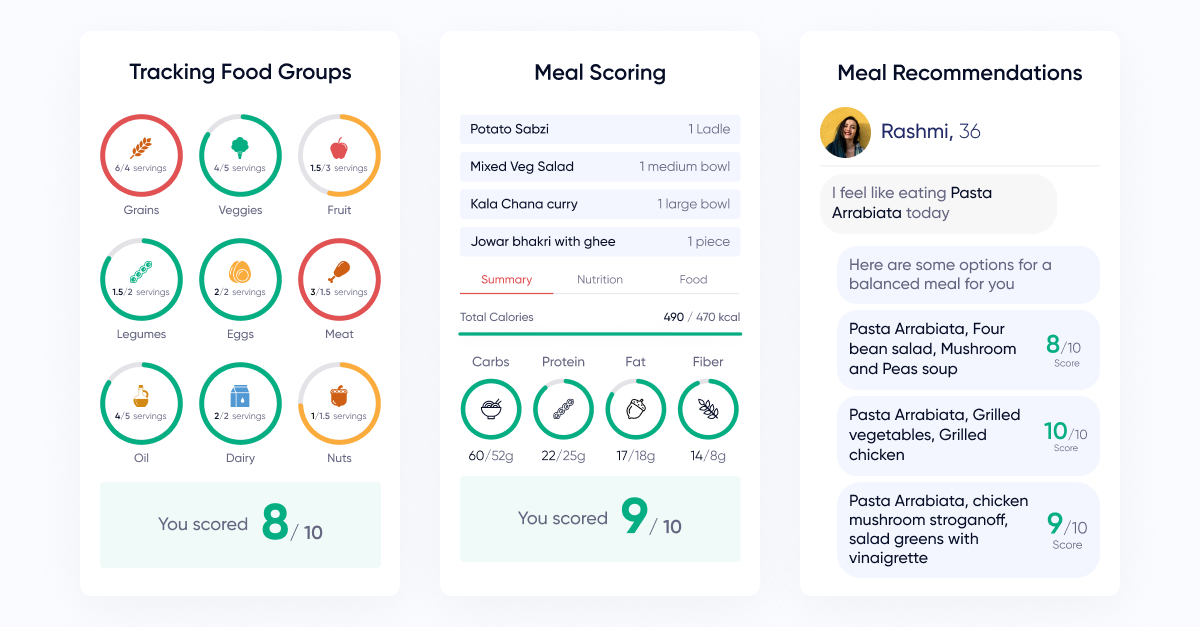
If you’ve been on social media for more than five minutes, you’ve probably heard some pseudo expert declare:
👉 “A typical Indian meal is protein deficient.”
👉 “Unless you add paneer, chicken breast, or whey protein, your thali has no protein.”
Sounds convincing, right? Except—it’s not true.
Let’s put aside WhatsApp forwards and influencer reels for a second and look at actual nutrition data.
A standard dal–roti–subji meal looks like this:

➡️ Total protein: ~20 g
And here’s the macro breakdown:
In case you missed it — this ratio is almost textbook perfect for the average Indian adult.
Another popular myth? “Dal isn’t a real protein source because it has more carbs.”
Let’s check the protein-to-calorie ratio instead:
If eggs are universally considered a protein source, then dal clearly qualifies too. The difference? Eggs have better PR. Dal doesn’t have a lobby of fitness bros marketing it.

The problem isn’t your thali. It’s the narrative.
Indian meals — dal, roti, sabji, rice, curd — provide a balanced macro profile and essential micronutrients. Sure, not every protein source is “complete,” but here’s the thing: not all of your daily protein needs to come from high-PDCAAS foods.
The bigger issue in India isn’t protein quality — it’s not meeting protein goals at all. Let’s fix that first before fearmongering about “incomplete proteins.”
The only way to cut through the noise is with accurate food and nutrition data:
This is exactly what enables digital health apps, calorie trackers, fitness platforms, and preventive health programs to give real insights instead of recycled myths.
When powered by a comprehensive food data API, apps can go beyond calories and macros to show:
That’s how you move from “generalized advice” to personalized, actionable insights.
The Indian thali isn’t protein deficient. The problem isn’t the food — it’s the misinformation.
Food is simple. Data is clear.
The sooner we use accurate food data APIs and standardized nutrition databases, the sooner we can move away from myths and toward healthier, more confident eating.
So the next time someone tells you your dal–roti meal “has no protein,” send them the numbers.
Data doesn’t lie. Pseudo experts do.





